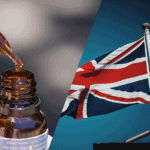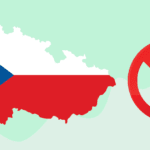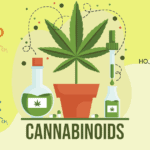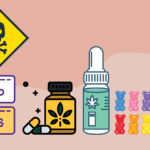Key takeaways:
- Minor cannabinoids are found in much smaller quantities than CBD or THC. But they play a large role in the effectiveness of CBD products.
- Many minor cannabinoids have distinct effects; you can choose products with higher levels of these cannabinoids if you’re looking for a particular benefit. For example, THCV may suppress appetite and increase energy even at relatively small doses.
- When you shop for full-spectrum CBD products, check third-party tests to ensure they contain at least 10% minor cannabinoids. For broad-spectrum products, aim for a minimum of 5%.
We’ve all heard of CBD and THC, the two main active compounds in cannabis. They’re considered cannabinoids, compounds which get their name from interacting with our body’s cannabinoid receptors.
But the cannabis plant also contains over 120 minor cannabinoids, which are found in much smaller quantities — typically below 1% dry weight (1). Also known as rare cannabinoids, they have a wide range of beneficial properties that researchers are just beginning to uncover.
Minor cannabinoids can be broken down into three groups: neutral, acidic, and varinic. Here’s what research tells us about the most important ones, including CBN, CBG, CBDa, and THCV.
| Cannabinoid | Key Effects | Main Uses | Intoxicating? |
| CBG | Analgesic, neuroprotective, appetite stimulant | Daytime energy & focus | No |
| CBN | Anti-inflammatory, neuroprotective | Sleep & relaxation | No |
| CBC | Analgesic, neuroprotective, antidepressant | Pain relief | No |
| Delta-8 THC | Analgesic, anti-nausea, appetite stimulant | Euphoria, enhanced mood, pain relief | Yes |
| CBGa | Anti-inflammatory, anti-diabetic | Immune support | No |
| CBDa | Anticonvulsant, antidepressant, anti-nausea | Overall wellness | No |
| THCa | Antiemetic, anticonvulsant, neuroprotective | N/A | No |
| CBDV | Anti-inflammatory, anticonvulsant, neuroprotective | N/A | No |
| THCV | Anti-diabetic, appetite suppressant, neuroprotective | Weight loss, diabetes | No |
Table of Contents
Minor Neutral Cannabinoids
The cannabis plant doesn’t directly produce neutral minor cannabinoids. Instead, they’re made from the breakdown of other (mostly acidic) cannabinoids when they’re exposed to heat and light.
CBN
The minor cannabinoid cannabinol (CBN) is somewhat unique because it’s not made from a cannabinoid acid. Instead, it’s made when THC is exposed to light, heat, and oxygen over time (1). That’s why aged cannabis can contain significant amounts of CBN, especially if it isn’t properly stored.
Unlike THC, CBN is non-intoxicating so it won’t get you high. Many people believe that CBN helps you sleep thanks to the observation that old weed seems to have stronger sleep-inducing effects.
But things are not that simple. The only relevant study we have showed that CBN strengthened the drowsiness caused by THC but had no similar effects of its own (2).
Additionally, according to esteemed cannabis researcher Dr. Ethan Russo, old weed is rich in sedating terpenes, which may explain its sleep-inducing reputation. But that hasn’t stopped most CBD companies from marketing CBN-rich products as sleep aids.
One group of researchers even wrote a paper reviewing all of the available studies on CBN, concluding that there isn’t sufficient evidence to say that CBN promotes sleep (3).
Aside from that, animal studies suggest that CBN may have anti-inflammatory, neuroprotective, pain-relieving, appetite-stimulating, anti-glaucoma, and other beneficial qualities (4, 5).
CBG
Alongside CBN, cannabigerol (CBG) is arguably the most popular minor cannabinoid. This non-intoxicating cannabinoid comes from cannabigerolic acid (CBGa), often called the “mother cannabinoid” because most other cannabinoids are derived from it (1).
Cannabis plants have relatively low amounts of CBG because most of the CBGa is converted by enzymes into THCa and CBDa, the acidic cannabinoids that turn into THC and CBD when exposed to heat.
Animal studies have shown that CBG may have appetite-stimulating, anti-inflammatory, analgesic (pain-relieving), anticancer, anxiolytic (anxiety-reducing), and neuroprotective effects (6). Additionally, a 2021 human study reported that CBG reduced skin irritation and redness (7).
CBG also interacts strongly with a2-adrenergic receptors, the same mechanism used by some antihypertensive, analgesic, and sedative drugs (8).
Meanwhile, in a survey of 121 people who smoked CBG-rich cannabis, 80% said it was better than prescription medicine for pain, 78.3% for anxiety, 73.9% for pain, and 73% for insomnia (9).
You can find CBG-rich products sold by many CBD brands. They’re usually marketed for daytime use because of claims that CBG may enhance energy and focus, but the research evidence is lacking.

CBC
Cannabichromene (CBC) is one of the lesser-known minor cannabinoids. It comes from cannabichromenic acid (CBCa), which itself is derived from CBGa.
We don’t know too much about CBC yet but early studies have reported pain-relieving, anti-inflammatory, antidepressant, anticonvulsant, and neuroprotective effects (10, 11, 12).
Some CBD companies offer CBC tinctures, capsules, and other products.
Delta-8 THC
Delta-8-tetrahydrocannabinol or delta-8 THC is another form of THC. This psychoactive minor cannabinoid occurs naturally in cannabis in small amounts (13). Research suggests that it’s about 33% less potent than delta-9 THC, the form of THC most people are familiar with (14).
A 2022 user survey found that delta-8 causes similar effects to delta-9 THC, including euphoria, pain relief, and relaxation (13). However, it was also reported to have weaker and fewer side effects, such as short-term memory impairment and anxiety.
Delta-8 THC exploded in popularity in 2020 and 2021 because hemp producers figured out that you can make it from CBD through a chemical conversion process. Since hemp is legal under the 2018 Farm Bill, this means that delta-8 THC made from hemp-derived CBD is also legal (15).
This unintended loophole has caused much controversy, with many states choosing to ban or regulate delta-8 THC products.
Delta-8 is sold in the form of gummies, vapes, tinctures, and other products. It’s most popular in states where cannabis is illegal for recreational use.
Minor Acidic Cannabinoids
Acidic cannabinoids, also known as cannabinoid acids, are the parent molecules to neutral cannabinoids. Cannabis plants only make acidic cannabinoids, which is why their levels are highest in raw, unprocessed plant material.
They always have the word “acid” in their name. For example, cannabidiolic acid (CBDa) is the acidic precursor to CBD. It’s only when the acidic cannabinoids are exposed to heat — like when smoking a cannabis joint — that they go through a process called decarboxylation and lose their acid group (1).
Just like their neutral brethren, cannabinoid acids have shown many beneficial properties in early research.

CBGa
As we mentioned earlier, cannabigerolic acid (CBGa) is the original cannabinoid that most others are made from, including THCa, CBDa, and CBCa. Early studies show it may have antidiabetic and anticancer effects (1).
A petri dish study also found that CBGa and CBDa were equally effective at blocking the COVID-19 virus from entering human cells (16). CBGa is fairly difficult to find, but a few CBD brands do sell it in tincture, capsule, and gummy form.
CBDa
Cannabidiolic acid (CBDa) is the parent molecule of CBD. Although it’s not technically a minor cannabinoid because its levels are quite high in cannabis (especially hemp varieties), most CBD products have low levels of CBDa because it’s usually decarboxylated into CBD.
Early CBDA research reports anti-inflammatory, antidepressant, analgesic, antiemetic (reduces nausea), anticancer, and anticonvulsant effects (1, 17).
The interesting thing about CBDa is that it has a much stronger (100 times) interaction with serotonin 5HT1A receptors than CBD, suggesting that it may be more useful for certain conditions, such as epilepsy (18).
Some CBD companies sell raw, non-decarboxylated tinctures and other products rich in CBDa.
THCa
THCa is the non-psychotropic, acidic form of THC. It’s abundant in cannabis flower and decarboxylates into THC when it’s smoked.
Technically speaking, it’s not a minor cannabinoid because cannabis has high levels of THCa. However, it counts as a minor cannabinoid for hemp, which is low in THCa/THC.
Animal studies suggest that THCa may have similar benefits to other cannabinoids, including anti-inflammatory, antiemetic, anticonvulsant, and neuroprotective properties (1).
A case report of four children with epilepsy also found that low doses of THCa alongside antiepileptic medicine improved seizures (19).
Minor Varinic Cannabinoids
Varins or varinic cannabinoids are considered the rarest type. They contain fewer carbon atoms which gives them somewhat different effects from other cannabinoids. They’re identified by the word “varin” on the end and the letter “V” in their acronym.
Varins are derived from a different “mother cannabinoid” — cannabigerovarinic acid (CBGVa), a varin analog of CBGa.
THCV
Tetrahydrocannabivarin (THCV) is a rare cannabinoid that’s similar in structure to THC but doesn’t share its psychoactive effects.
One 2016 clinical study on type-2 diabetics found that THCV may help regulate blood sugar and help with insulin sensitivity (20). Another 2015 study of cannabis users reported that THCV may counteract some of the negative effects of THC, including short-term memory problems and increased heart rate (21).
Animal and petri dish studies have also reported neuroprotective, anti-acne, and other beneficial effects (22, 23).
But most of the hype around THCV has to do with appetite. A 2009 animal study reported that THCV lowered food intake and led to weight loss in mice (24).
THCV products are often marketed as “diet weed” with claims of appetite suppression and increased energy levels. But proper human studies need to be done to confirm these claims. You can find THCV tinctures and gummies sold by some CBD brands.
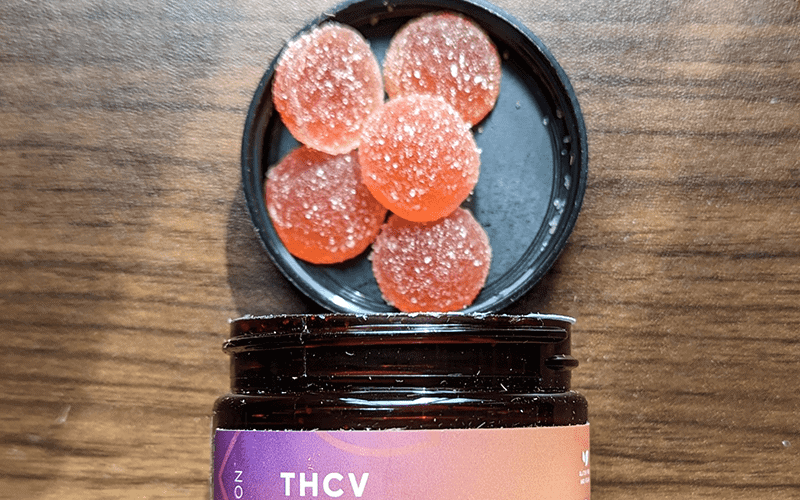
CBDV
As you probably guessed, cannabidivarin (CBDV) is the varin version of CBD. This non-intoxicating minor cannabinoid shows early promise in treating epilepsy and autism spectrum disorder (ASD).
It’s currently being studied by GW Pharmaceuticals, a British pharmaceutical company known for making the only CBD drug (Epidiolex) that’s approved for treating rare types of seizures.
A 2022 clinical study of CBDV in girls with epilepsy caused by a rare condition called Rett syndrome reported improvement in seizures with no serious side effects (25). Another clinical trial in children with ASD is ongoing.
Animal studies have also reported that CBDV may help with nausea, Parkinson’s disease, and other health conditions (26, 27, 28).
Minor Cannabinoids and the Entourage Effect
Aside from their potential benefits, minor cannabinoids are also believed to play a major role in the cannabis entourage effect: the idea that all of the cannabinoids, terpenes, flavonoids, and other compounds in cannabis work in synergy, enhancing each other’s effects (29).
Since being proposed in the 1990s, researchers have found ongoing evidence for this effect, including:
- A 2018 study on epilepsy patients reported that full-spectrum CBD-rich cannabis extracts were 4 times more potent than pure CBD and had fewer side effects (30)
- An older human study found that CBN enhanced the drowsiness caused by THC (2)
- Multiple studies have shown that THC has greater pain-relieving and other effects when paired with CBD and other cannabinoids (31, 32, 33)
- A petri dish study found that combining CBD with CBG produced greater anti-inflammatory effects than either alone (34)
If you want to maximize the entourage effect, you should opt for whole-plant, full-spectrum cannabis, and hemp products instead of those containing pure cannabinoids.
Always Check Minor Cannabinoid Levels
After personally testing hundreds of CBD products, the biggest trend I’ve noticed is that those with a higher minor cannabinoid content have greater and more diverse effects.
For example, when I try a CBD oil with 15% minor cannabinoids, the calm and relaxation I feel are greater than an equal dose of another one with only 5%. I sometimes also feel additional effects like improved mood.
For that reason, I recommend checking the levels of minor cannabinoids on third-party test results for any full or broad-spectrum product you plan on buying. This is especially important for CBD oil.
The easiest way to do this is to take the total amount of cannabinoids and divide it by the amount of CBD. The example below shows that this full-spectrum CBD oil contains 2090.6 mg of cannabinoids and 1666.7 mg of CBD in total.

That means it contains 2090.6/1666.7 = 25.4% minor cannabinoids, which is an excellent result (in this case, THC also counts as a minor cannabinoid since hemp contains relatively small amounts of it).
Ideally, full-spectrum products should contain at least 10% minor cannabinoids, while broad-spectrum ones should have at least 5%. The more, the better.
Minor Cannabinoids are Important, But More Research Needed
There are many more minor cannabinoids than I covered but the ones above have seen the most research.
As we can see, rare cannabinoids have many beneficial properties and hold serious potential in the medical field. Although further clinical research is needed to understand their properties fully, it’s clear that they play an important role in the effects of cannabis.
The best and easiest way to benefit from minor cannabinoids is to use whole-plant cannabis products such as full-spectrum CBD oil. I recommend checking third-party test results to choose those with a minor cannabinoid content of at least 10% (relative to the amount of CBD).
References
- Walsh, Kenneth B., Amanda E. McKinney, and Andrea E. Holmes. “Minor cannabinoids: Biosynthesis, molecular pharmacology and potential therapeutic uses.” Frontiers in Pharmacology (2021): 3366.
- Karniol, Isac G., et al. “Effects of Δ9-tetrahydrocannabinol and cannabinol in man.” Pharmacology 13.6 (1975): 502-512.
- Corroon, Jamie. “Cannabinol and sleep: separating fact from fiction.” Cannabis and cannabinoid research 6.5 (2021): 366-371.
- Maioli, Chiara, et al. “Cannabinol: History, Syntheses, and Biological Profile of the Greatest “Minor” Cannabinoid.” Plants 11.21 (2022): 2896.
- Liang, Zhibin, et al. “Cannabinol inhibits oxytosis/ferroptosis by directly targeting mitochondria independently of cannabinoid receptors.” Free Radical Biology and Medicine 180 (2022): 33-51.
- Calapai, Fabrizio, et al. “Pharmacological Aspects and Biological Effects of Cannabigerol and Its Synthetic Derivatives.” Evidence-Based Complementary and Alternative Medicine 2022 (2022).
- Perez, Eduardo, et al. “In Vitro and Clinical Evaluation of Cannabigerol (CBG) Produced via Yeast Biosynthesis: A Cannabinoid with a Broad Range of Anti-Inflammatory and Skin Health-Boosting Properties.” Molecules 27.2 (2022): 491.
- Nachnani, Rahul, Wesley M. Raup-Konsavage, and Kent E. Vrana. “The pharmacological case for cannabigerol.” Journal of Pharmacology and Experimental Therapeutics 376.2 (2021): 204-212.
- Russo, Ethan B., et al. “Survey of patients employing cannabigerol-predominant cannabis preparations: Perceived medical effects, adverse events, and withdrawal symptoms.” Cannabis and Cannabinoid Research 7.5 (2022): 706-716.
- Etchart, Maia G., et al. “In vitro evaluation of the interaction of the cannabis constituents cannabichromene and cannabichromenic acid with ABCG2 and ABCB1 transporters.” European Journal of Pharmacology 922 (2022): 174836.
- Stone, Nicole L., et al. “A systematic review of minor phytocannabinoids with promising neuroprotective potential.” British Journal of Pharmacology 177.19 (2020): 4330-4352.
- Maione, Sabatino, et al. “Non‐psychoactive cannabinoids modulate the descending pathway of antinociception in anaesthetized rats through several mechanisms of action.” British journal of pharmacology 162.3 (2011): 584-596.
- Kruger, Jessica S., and Daniel J. Kruger. “Delta-8-THC: Delta-9-THC’s nicer younger sibling?.” Journal of cannabis research 4.1 (2022): 1-8.
- Hollister, Leo E., and H. K. Gillespie. “Delta‐8‐and delta‐9‐tetrahydrocannabinol; Comparison in man by oral and intravenous administration.” Clinical Pharmacology & Therapeutics 14.3 (1973): 353-357.
- Leas, Eric C. “The hemp loophole: A need to clarify the legality of delta-8-THC and other hemp-derived tetrahydrocannabinol compounds.” American Journal of Public Health 111.11 (2021): 1927-1931.
- van Breemen, Richard B., et al. “Cannabinoids block cellular entry of SARS-CoV-2 and the emerging variants.” Journal of natural products 85.1 (2022): 176-184.
- Hen-Shoval, D., et al. “Acute oral cannabidiolic acid methyl ester reduces depression-like behavior in two genetic animal models of depression.” Behavioural brain research 351 (2018): 1-3.
- Russo, Ethan B. “Cannabis therapeutics and the future of neurology.” Frontiers in integrative neuroscience (2018): 51.
- Sulak, Dustin, Russell Saneto, and Bonni Goldstein. “The current status of artisanal cannabis for the treatment of epilepsy in the United States.” Epilepsy & Behavior 70 (2017): 328-333.
- Jadoon, Khalid A., et al. “Efficacy and safety of cannabidiol and tetrahydrocannabivarin on glycemic and lipid parameters in patients with type 2 diabetes: a randomized, double-blind, placebo-controlled, parallel group pilot study.” Diabetes Care 39.10 (2016): 1777-1786.
- Englund, Amir, et al. “The effect of five day dosing with THCV on THC-induced cognitive, psychological and physiological effects in healthy male human volunteers: a placebo-controlled, double-blind, crossover pilot trial.” Journal of Psychopharmacology 30.2 (2016): 140-151.
- García, C., et al. “Symptom‐relieving and neuroprotective effects of the phytocannabinoid Δ9‐THCV in animal models of Parkinson’s disease.” British journal of pharmacology 163.7 (2011): 1495-1506.
- Oláh, Attila, et al. “Differential effectiveness of selected non‐psychotropic phytocannabinoids on human sebocyte functions implicates their introduction in dry/seborrhoeic skin and acne treatment.” Experimental dermatology 25.9 (2016): 701-707.
- Riedel, Gernot, et al. “Synthetic and plant‐derived cannabinoid receptor antagonists show hypophagic properties in fasted and non‐fasted mice.” British journal of pharmacology 156.7 (2009): 1154-1166.
- Hurley, Ellen N., et al. “Efficacy and safety of cannabidivarin treatment of epilepsy in girls with Rett syndrome: A phase 1 clinical trial.” Epilepsia (2022).
- Rock, Erin M., et al. “Evaluation of the potential of the phytocannabinoids, cannabidivarin (CBDV) and Δ9‐tetrahydrocannabivarin (THCV), to produce CB1 receptor inverse agonism symptoms of nausea in rats.” British journal of pharmacology 170.3 (2013): 671-678.
- Iannotti, Fabio Arturo, et al. “Effects of non‐euphoric plant cannabinoids on muscle quality and performance of dystrophic mdx mice.” British journal of pharmacology 176.10 (2019): 1568-1584.
- Wang, Fangru, et al. “Cannabidivarin alleviates α‐synuclein aggregation via DAF‐16 in Caenorhabditis elegans.” The FASEB Journal 37.2 (2023): e22735.
- Russo, Ethan B. “The case for the entourage effect and conventional breeding of clinical cannabis: no “strain,” no gain.” Frontiers in plant science (2019): 1969.
- Pamplona, Fabricio A., Lorenzo Rolim Da Silva, and Ana Carolina Coan. “Potential clinical benefits of CBD-rich cannabis extracts over purified CBD in treatment-resistant epilepsy: observational data meta-analysis.” Frontiers in neurology (2018): 759.
- Johnson, Jeremy R., et al. “Multicenter, double-blind, randomized, placebo-controlled, parallel-group study of the efficacy, safety, and tolerability of THC: CBD extract and THC extract in patients with intractable cancer-related pain.” Journal of pain and symptom management 39.2 (2010): 167-179.
- Russo, Ethan, and Geoffrey W. Guy. “A tale of two cannabinoids: the therapeutic rationale for combining tetrahydrocannabinol and cannabidiol.” Medical hypotheses 66.2 (2006): 234-246.
- Anand, Uma, et al. “Dose-Related Inhibition of Capsaicin Responses by Cannabinoids CBG, CBD, THC and their Combination in Cultured Sensory Neurons.” Journal of Pain Research 14 (2021): 3603.
- Mammana, Santa, et al. “Could the combination of two non-psychotropic cannabinoids counteract neuroinflammation? Effectiveness of cannabidiol associated with cannabigerol.” Medicina 55.11 (2019): 747.

Gleb is a freelance writer from Vancouver, Canada specializing in CBD and cannabis. He’s read thousands of studies on CBD and other supplements, helping him translate complex science into plain language. Gleb has tried and reviewed dozens of CBD brands and products, written third-party testing reports, and knows the CBD industry inside and out. When not writing, he likes to kickbox, travel, and tell everyone how awesome intermittent fasting is.


